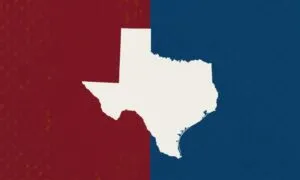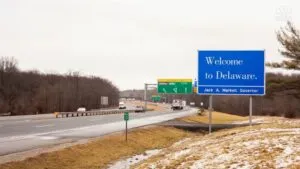In June 2025, Texas lawmakers passed Senate Bill 3 and sent it to Governor Greg Abbott. The measure aimed to sharply restrict intoxicating hemp-derived products, such as delta-8 THC and other cannabinoids often sold in convenience stores and online.
On June 23, Abbott vetoed the bill. His reasoning was not a blanket rejection of regulation but a caution against the bill’s overly broad language, which he warned would almost certainly spark immediate constitutional challenges.
Abbott made it clear: lawmakers should come back with a narrower version that protects legitimate hemp and CBD businesses while cracking down on intoxicating products.
That moment matters beyond Texas. When one of the nation’s largest retail markets tests the legal and political limits of hemp regulation, other states take notice. And right now, all signs point toward more proposals modeled after SB3 landing in legislatures across the country.
Courts are signaling they will uphold state-level restrictions, Congress is considering redefining hemp at the federal level, and public health agencies are sounding alarms about safety and youth access. Put together, the stage is set for a wave of new state laws in 2025 and 2026.
Table of Contents
ToggleKey Points
- Courts and Congress are clearing the way for stricter hemp rules, with federal redefinition likely.
- States are adopting SB3-style laws through THC caps, licensing, taxes, or outright bans.
- Public health data on poisonings and youth exposure drives legislative urgency.
- Businesses should already prepare for potency limits, 21+ rules, and alcohol-style regulators.
Why States Are Moving Toward SB3-Style Bills
Three main pressures are driving lawmakers.
Safety and Youth Access Concerns
Public health reports are front and center. Federal regulators have flagged a sharp rise in adverse events tied to delta-8 THC products.
Between January 2021 and December 2023, the FDA logged more than 300 reports, nearly half of which required hospital or ER visits. Many cases involved edibles that looked almost identical to regular candy or snacks.
The Federal Trade Commission (FTC) and the FDA have both issued warning letters to companies selling “copycat” edibles mimicking popular brands. In parallel, America’s Poison Centers recorded 3,358 delta-8 exposure cases in 2022, an 82 percent increase over the prior year.
Data analysis also showed that exposure rates were lower in states with either legalized cannabis markets or strict hemp rules, suggesting regulations can reduce harm.
Responsible operators like Hometown Hero are already taking steps to avoid the copycat packaging problem regulators are worried about.
Courts Are Backing State Authority
Two appellate decisions in 2025 shifted the legal ground.
- Fourth Circuit, January 2025: Upheld Virginia’s law imposing “total THC” limits, which cap packages at 2 mg THC unless products carry a 25:1 CBD-to-THC ratio. The court rejected arguments that the 2018 Farm Bill preempted such state rules.
- Eighth Circuit, June 2025: Reversed an injunction against Arkansas Act 629, allowing the state to ban hemp-derived intoxicants outright. The court concluded states are not required under federal law to permit these products.
Federal Law Is in Flux
According to Reuters reports, Congress is debating a potential redefinition of hemp. Proposals in the Farm Bill and appropriations measures would exclude intoxicating cannabinoids and count THCA toward total THC.
If enacted, the entire hemp marketplace could change overnight. Coverage by outlets like Reuters has highlighted how such changes would close the loophole that allowed intoxicating hemp products to flourish after the 2018 Farm Bill.
The Playbook States Are Using

Not all states are aiming for the same outcome. Some want guardrails to allow a regulated low-dose hemp market.
Others want to ban intoxicating cannabinoids outside licensed cannabis channels. Here are the main approaches taking shape.
Potency Rules and Total THC Math
- Total THC caps: Virginia’s framework combines delta-9 THC and THCA into a total cap. Unless products meet a 25:1 CBD-to-THC ratio, they are limited to 2 mg THC per package.
- Serving and package limits: Minnesota permits up to 5 mg THC per serving and 50 mg per package for hemp edibles and drinks, with clear labeling and QR-code links to lab results.
- THCA counted as THC: DEA letters from 2023 and 2024 confirm that THCA must be included in total THC after decarboxylation. States cite these letters when closing loopholes around “THCA flower.”
Age Gates, Packaging, and Placement

- 21+ restrictions are becoming standard.
- Child-resistant packaging and warning labels are now required in more states.
- Copycat packaging crackdowns are targeting products designed to resemble candy, snacks, or soda brands.
Licensing, Taxes, and Enforcement
- Licensing shifts: According to VDACS, oversight is moving from agriculture departments to alcohol- or tobacco-style regulators. Virginia has even created a dedicated Office of Hemp Enforcement.
- Taxes: States like Tennessee have introduced per-milligram THC wholesale taxes, which are easier to administer than percentage-based systems (per Dickinson Wright).
- Channel restrictions: According to AP News, Alabama’s 2025 law bans smokable hemp, sets potency caps (10 mg per serving, 40 mg per container), requires age 21 minimum, restricts online sales, and places oversight with the Alcoholic Beverage Control Board.
Full or Near-Full Prohibitions
- Arkansas Act 629 bans a broad class of intoxicating hemp derivatives, and the Eighth Circuit’s June 2025 ruling means the ban now stands (per the Arkansas State Legislature).
- California and others have excluded “intoxicating cannabinoids” from hemp foods, either banning them outright or channeling them into the state’s cannabis system, according to the American Bar Association.
Comparing State Models
| Model | Core Moves | Where You See It | Why It Matters |
|---|---|---|---|
| Strict cap + total THC | 0.3% THC, 2 mg per package unless 25:1 CBD:THC; strong penalties; 21+; testing | Virginia (SB 903, 2023; 4th Cir. upheld Jan 2025) | Courts have validated this approach under state police powers. |
| Regulate low-dose market | 5 mg per serving, 50 mg per package, QR codes, age 21, licensing | Minnesota edibles and drinks | Demonstrates a middle path with regulated access. |
| Ban intoxicating hemp | Broad prohibitions on delta-8, delta-10, THCP, etc. | Arkansas Act 629 (upheld June 2025) | Opens the door to similar bans across the South and Midwest. |
| Alcohol-style regulator | ABC-style oversight, smokable ban, serving caps, 21+ | Alabama HB 445, 2025 | Early example of controlled retail channels for hemp intoxicants. |
| Tax and license first | Per-mg taxes, universal licensing, enforcement | Tennessee updates 2023–2025 | Offers a scalable model for revenue and compliance. |
Will More States Introduce SB3-Like Bills?
The short answer: very likely. Several factors line up in favor.
- Courts have cleared the runway: The Fourth and Eighth Circuit rulings show that state laws restricting or banning intoxicating hemp can stand.
- Congress is debating definitions: If hemp is redefined federally, states will race to align. Even before that, lawmakers want to get ahead of the curve.
- Neighbor pressure: When one state restricts access, cross-border shopping and regulatory gaps push nearby states to act.
- Public health data is persuasive: Poison center numbers, ER visits, and child exposure incidents carry political weight.
- Chevron’s fall: After the Supreme Court’s 2024 Loper Bright decision, agencies face stricter review in court, shifting power to legislatures and encouraging states to pass detailed statutes.
States to Watch in the Next Wave
- Texas: Expect a revised SB3, narrower in scope but firm in targeting intoxicating products. Abbott’s veto was a call for refinement, not an invitation to maintain the status quo.
- North Carolina: Lawmakers are weighing stricter limits after a surge of unregulated products in the state.
- Nebraska: Debate continues between those pushing for outright criminalization and those advocating for regulation.
- Alabama: Already has a restrictive law in place, with more rules expected through agency rulemaking.
- Tennessee and Georgia: Refining tax, testing, and licensing frameworks. Tennessee’s per-mg tax could serve as a model elsewhere. Georgia courts have recognized that delta-8 and delta-10 are not automatically controlled substances, pushing legislators toward stricter labeling and testing rules rather than bans.
Practical Guidance for Businesses
If you operate in the hemp space, you do not need to wait for your legislature to act. You can prepare now for what is almost certainly coming.
Product Design and Testing
- Treat THCA as part of total THC in your internal specs.
- Aim for no more than 5 mg per serving, 50 mg per package.
- Use third-party lab tests with QR-code access for consumers.
Labeling and Packaging
- Steer clear of child-oriented designs, cartoons, or snack look-alikes.
- Plan for 21+ access only. Online sales may require adult signature on delivery.
Compliance and Logistics
- Prepare for alcohol- or tobacco-style regulators with frequent inspections.
- Budget for potency-based taxes.
- Watch interstate logistics: federal law protects transportation of compliant hemp through restrictive states, but in-state sales may trigger enforcement.
What Could Slow the Spread

A few forces might temper how aggressively states move.
Economic Pressure
Retailers, beverage makers, and hemp farmers are lobbying to preserve low-dose markets. Their pushback sometimes shifts debates from bans to regulated models.
Effective State Guardrails
Minnesota’s framework is being watched as a possible balance between safety and access. If data show it works, lawmakers may copy it instead of enacting bans.
Federal Clarity
If Congress sets a uniform definition distinguishing non-intoxicating hemp from intoxicating products, the patchwork approach may ease.
Bottom Line
The momentum is undeniable. Courts are upholding strong state rules, Congress is signaling federal change, and public health data continues to fuel legislative interest. That does not mean every state will ban hemp-derived intoxicants outright.
But it does mean most legislatures will, at minimum, tighten the screws with age limits, potency caps, licensing systems, and stricter labeling in 2025 and 2026.
For businesses in the space, the safest move is to build products and compliance systems as if those rules were already in place. The wave of SB3-style bills is coming, and being prepared is the best way to stay afloat.
Related Posts:
- Safest Countries in the World in 2025 - GPI…
- 26 Most Dangerous Cities in US - Updated Statistics for 2025
- Legislative Tracker: Pro-LGBTQ Nondiscrimination Legislation
- What You Need To Know About the Equality Act in 2025
- America's Murder Capitals: A 2025 Ranking of the…
- The Hidden Boundaries of Free Speech in Modern Democracies








